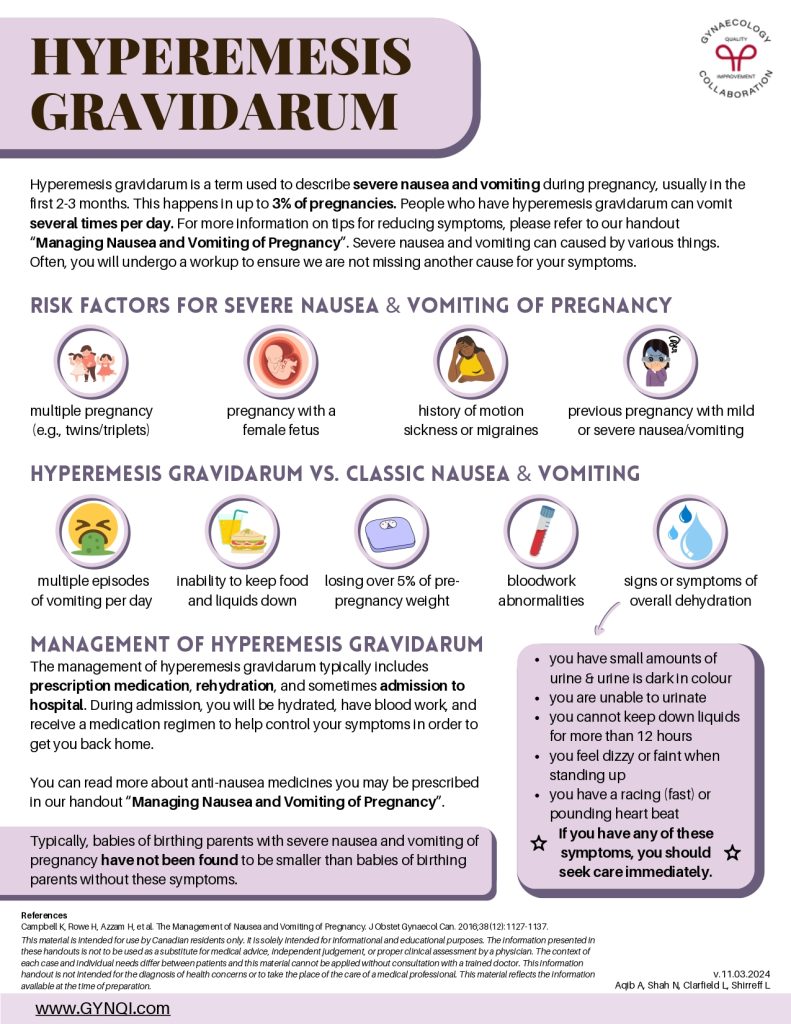
Hyperemesis Gravidarum
Hyperemesis gravidarum is a term used to describe severe nausea and vomiting during pregnancy, usually in the first 2-3 months. This happens in up to 3% of pregnancies. People who have hyperemesis gravidarum can vomit several times per day. For more information on tips for reducing symptoms, please refer to our handout “Managing Nausea and Vomiting of Pregnancy”. Severe nausea and vomiting can caused by various things. Often, you will undergo a workup to ensure we are not missing another cause for your symptoms.
Risk Factors For Severe Nausea & Vomiting of Pregnancy
- Multiple pregnancy (e.g., twins/triplets)
- Pregnancy with a female fetus
- History of motion sickness or migraines
- Previous pregnancy with mild or severe nausea/vomiting
Hyperemesis Gravidarum Vs. Classic Nausea & Vomiting
- Multiple episodes of vomiting per day
- Inability to keep food and liquids down
- Losing over 5% of pre-pregnancy weight
- Bloodwork abnormalities
- Signs or symptoms of overall dehydration”
- You have small amounts of urine & urine is dark in colour
- You are unable to urinate
- You cannot keep down liquids for more than 12 hours
- You feel dizzy or faint when standing up
- You have a racing (fast) or pounding heartbeat
- If you have any of these symptoms, you should seek care immediately.
Management of Hyperemesis Gravidarum
The management of hyperemesis gravidarum typically includes prescription medication, rehydration, and sometimes admission to hospital. During admission, you will be hydrated, have blood work, and receive a medication regimen to help control your symptoms in order to get you back home.
You can read more about anti-nausea medicines you may be prescribed in our handout “Managing Nausea and Vomiting of Pregnancy”.
Typically, babies of birthing parents with severe nausea and vomiting of pregnancy have not been found to be smaller than babies of birthing parents without these symptoms.



